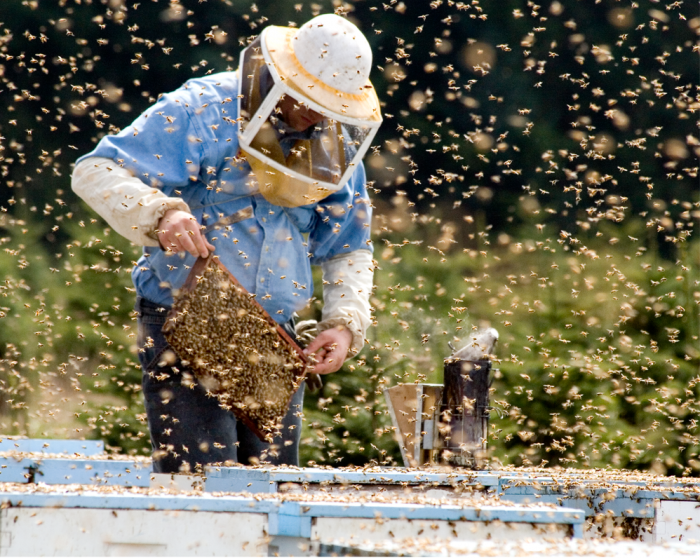Beekeeping in Food Forests: A Harmony of Nature and Sustainability
In recent years, there has been a growing interest in sustainable living practices. One method that has gained significant popularity is the concept of food forests – self-sustaining ecosystems that mimic natural forests while providing an abundance of edible plants. These food forests not only promote biodiversity but also offer a perfect setting for beekeeping. The harmonious relationship between bees and food forests creates a win-win situation for both the environment and humans.
Bees play a vital role in pollination, ensuring the reproduction of countless plant species. In food forests, their presence enhances fruit production by cross-pollinating different varieties and increasing yield quantity and quality. By integrating beekeeping into these ecosystems, we can further support the overall health of our gardens while enjoying delicious honey as an added bonus.
To begin beekeeping in your food forest, it’s essential to create an environment conducive to attracting bees. Start by planting a diverse range of flowers that bloom throughout the year to provide nectar sources for bees during all seasons. Native wildflowers are particularly attractive to native bee species and should be prioritized when selecting plantings.
When it comes to beehives, consider using top bar hives or other more natural types rather than traditional Langstroth hives commonly used in commercial beekeeping operations. Top bar hives mimic the shape of natural tree hollows where bees naturally build their colonies, allowing them to thrive with minimal human intervention.
Managing bees in a food forest requires adopting organic practices that align with nature’s principles rather than relying on chemical interventions. Avoid pesticide use within your garden as much as possible since pesticides can harm not only bees but also other beneficial insects crucial for maintaining ecosystem balance.
Proper hive placement is another critical aspect to keep in mind when introducing bees into your food forest. Ensure they have easy access to water sources nearby without having to compete with other wildlife or livestock. Creating bee-friendly habitats like mud puddles or shallow water containers with rocks for landing spots will also help sustain a healthy bee population.
Regularly monitoring the health of your hives is essential to prevent and address any potential issues promptly. This includes regular hive inspections, checking for pests such as varroa mites, and taking measures to control their populations naturally.
Beekeeping in food forests not only benefits the environment but also provides an opportunity for individuals and communities to reconnect with nature. The process of tending to bees can be therapeutic, promoting mindfulness and a sense of purpose in caring for these tiny creatures that contribute so significantly to our ecosystems.
In conclusion, integrating beekeeping into food forests creates a harmonious relationship that promotes biodiversity while providing us with valuable honey and increased crop yields. By adopting sustainable practices, we can ensure the well-being of both our bees and our environment. So why not explore this fascinating journey into beekeeping within your own food forest? It’s a rewarding endeavor that fosters sustainability, connects you with nature, and allows you to reap the sweet rewards of honey production along the way.


Leave a comment